#aztec temple
Text
IXCHEL, the Mayan Moon Goddess
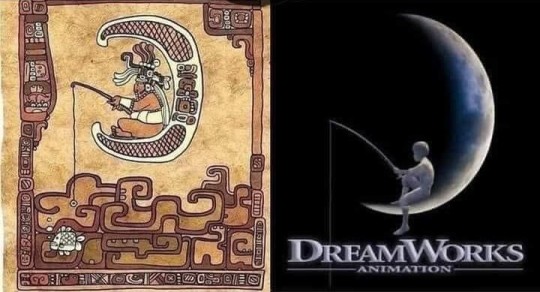
Official Pyramid Media 369 website: www.pyramidmedia369.com
Here is a picture of the Ancient Mayan Goddess, Ixchel (pronounced Ischel) and sitting on the Moon and holding a rabbit while fishing. The fishing pole and the fish are also symbolic. Have you ever heard of the Fishers of Men? I will explain this in a different article. The Rabbit she is holding symbolizes fertility, sex and abundance (good fortune). The Moon Goddess is known to be a goddess of love, midwifery, sex, fertility, pregnancy/childbirth, water, rain, textile arts, agriculture and natural medicine. In hieroglyphs, her name appears as Chak Chel, which means “Big Rainbow”. Ixchel is one half of the original Creator Couple. Yes you heard it right, the Creator is a companion! There is always a masculine-feminine counterpart in the untold stories of the Creator. The male Creator God is known as Itzamna, the Solar God, the Supreme Being, Father of The Universe, etc. Ixchel, Itzamna’s wife, is also believed to have just been the feminine manifestation of the Creator, as she is the mother of both the Sun and the Moon. Some also referred to as an evil old woman that had unfavorable aspects, due to her association with destruction, floods. But she was honored because of her many different healing powers. She is also depicted as an old woman emptying a vessel of water on certain hieroglyphs.
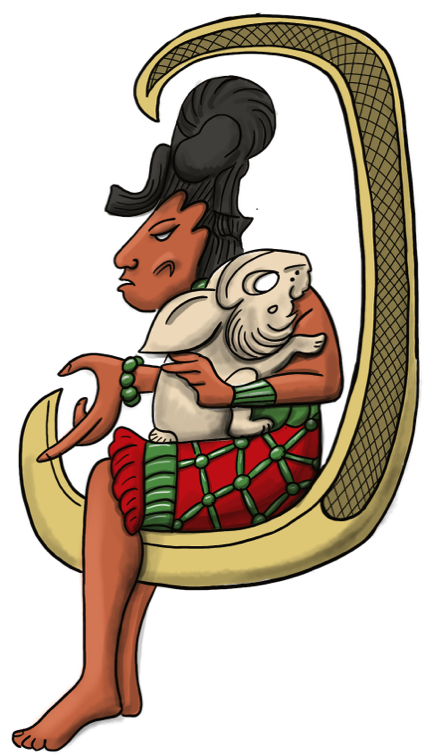
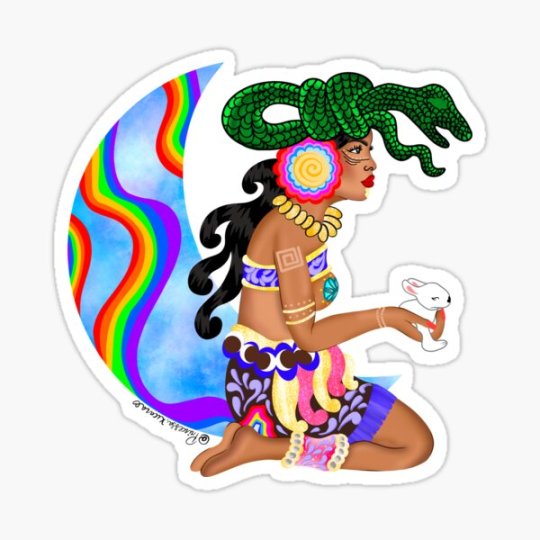
She is also referred to as “Goddess O’ in the Dresden Codex, the original Mayan Tablets found in Dresden Germany, hence the name. “Goddess I” is her younger counterpart, ie. a younger projection of herself. She is the Goddess of Marriage; as well as human procreation, as they aid the health & vital functions of the fertile woman. Together, they are the representation of Frigg/Frigga in Norse mythology, which is ultimately Venus. Hence the term Fri-day. See my previous article about the days of the week and their names. But nonetheless, all Venusian deities are Mother Goddesses.
The serpent on her head not only represents the shedding of old skin, it also represents transformation, Divine Feminine, Healing, Kundalini and Christ energy. She also was known as the Jaguar Goddess of War, due to her fierce ability to protect her tribe the same way a Grandmother would for all her family’s children. Although there is little information regarding her association with the Jaguar. Her energy is very subtle and supportive, and is known to aid both men and women who are on a path to transformation. Just like a Grandmother right?


The Temple of Ixchel
Among the Mayans, physicians and priests hailed her as the patron deity of divination and medicine. Mayan women visited sanctuaries dedicated to Ixchel when they wanted a happy marriage or a child. She has been depicted as overlooking childbirth in scenes painted on vases from Mayan Classic era. Certain other sources also hint her to be an Earth Goddess as well. She has various different expressions and is held to the highest regard out of all Goddesses in the Mayan pantheon. These assumptions are primarily made by identifying one or more of Ixchel’s traits with those of the other deities mentioned. I mean, she is 50% of the creator, isn’t she? Makes sense to me. Below you will see ancient Mayan transcripts indicating that it was advanced levels of science being exemplified.

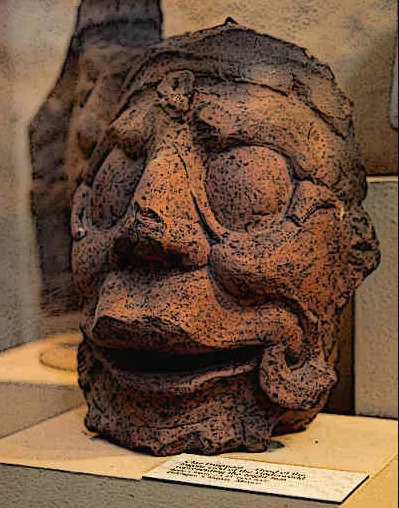
The Dresden Codex (Mayan Tablets)


Mayan Cosmovision
This is the Mayan depiction of the Earth, cosmos, elements and the 4 corners of the earth. Below you will see Ixchel floating amonst the firmament. The Red, White, Yellow and Black all represent one N, S, E, & W as well as the 4 elements.

Mayan Elemental Wheel & Tree of Life



#ixchel#ancienthistory#mayan mythology#aztec temple#aztec culture#aztec gods#gods#goddess#Itzamma#pyramid media#nature#higher self#peace#intuition#inner peace#mantra#meditate#mysticism#spiritualism#Pyramid media#369#Periodic Table#Science#Moon Goddess#Astrology
103 notes
·
View notes
Text

Templo Balam - Jaguar Temple! 🐆
Inspired by a mix of Mayan and Aztec architectural styles, to create one impressive Mesoamerican pyramid! The idea was to create a sort of cultural trade center, for different cultures to exchange goods, art, and services peacefully with one another.
#aztec culture#aztecinspired#Aztec#mayan civilization#Mayan#mesoamerica#mesoamerican#mexico#temple#mexican#jaguar#mexica#aztec empire#azteca#yucatán#architecture#fantasy architecture#fantasy art#fantasy#aztec temple#mayan temple#pyramid#history#mixtec#zapotec#tenochtitlán
26 notes
·
View notes
Text
OPM God's mural
I'd like to propose a hypothesis.
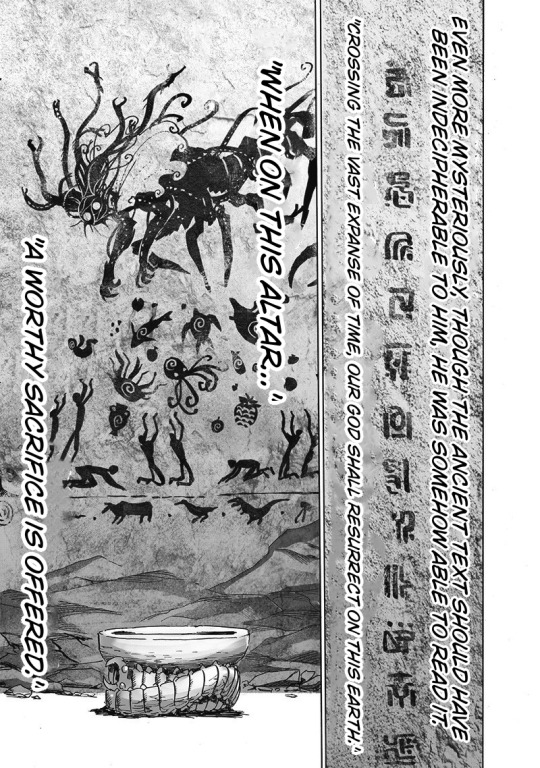
"Crossing the vast expanse of time"
Note the vast. Just because Saitama jumped on time, does not mean it's a vast time jump, half an hour at best or something. So no, this is not going to be the fabled resurrection of God by a long shot.
Let's think about the fact that the God below ground causes time dilation that Blast mentions.

I would assume here that God below ground, is actually stuck inside a time dilation, where time just flows slower. So it has been there probably for quite some time. We're talking about more than centuries, all the way to the first era of change minimum. There are some people in WC who are like centuries old. Or we have to do one better, the creation of mankind. Or even...the universe itself.
(We shouldn't lowball when it comes to ONE's storytelling lol)
So in theory, if this God gets out of the dimensional barrier, it would mean it crosses a vast expanse of time. Not just time but space too. Because time in OPM world is not linear concept, it's an infinite loop. An ouroboros, snake's head eats snake's tail.
So, about that God's mural. One important thing that gets pointed out by the narrative. The narration that will always tell the factual truth.


"It's full picture remains unseen by anyone..."
That means us too btw. The reader.
The narrative, tells us, that nobody has seen the full mural. Nobody.
It means there is MORE.
This is not the full prophetic mural.
It means that what appears to be a human in monster form, possibly God itself or just a human who takes on Godly monster form, is also just a sacrifice of souls to become something even greater. Something that would resurrect on OPM Earth.
Saitama apparently fit the bill. And the prophecy still remains true, because he was not in line to be sacrificed yet, not before Orochi.


And honestly? That small entrance to what seems to be a depiction of an Inca/Aztec temple?
You can't see the top, the ceiling of the temple at all. And there might be more layers. Just the base alone suggests it's far larger than what it appears, it's just completely buried under.

There is also no entrance anywhere, which you would find from the top of a typical temple layout. Only stairs.
It means we've only scratched the surface of God's prophetic mural and we still need to climb up the ladder to see the full picture. And by then, the prophecy may come true when we go inside the temple.
33 notes
·
View notes
Photo
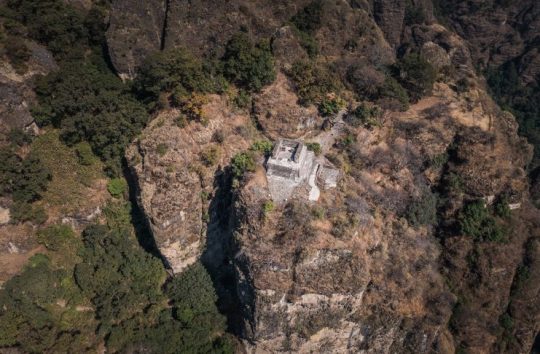
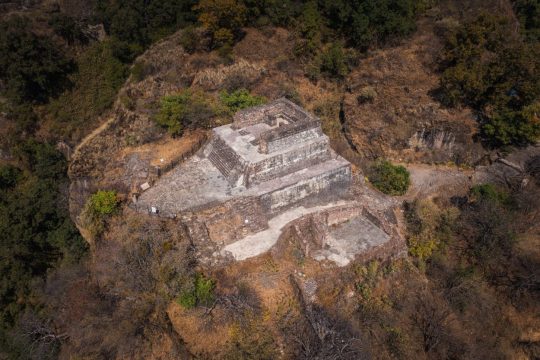
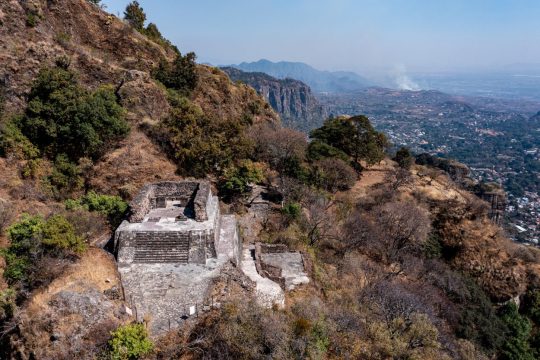
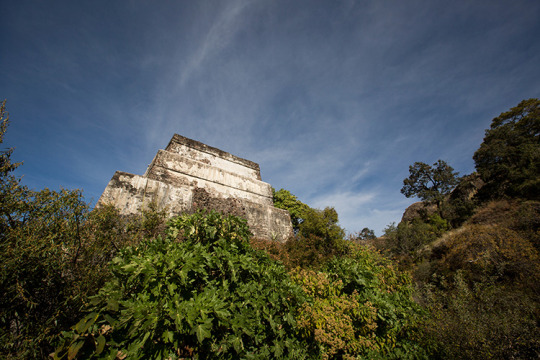
El Tepozteco – The Temple of the Drunken Aztec Rabbit
El Tepozteco is a remote Aztec temple, built on one of the peaks of the Sierra de Tepoztlan in Morelos, Mexico.
The temple is dedicated to Ometochtli-Tepoztēcatl, an Aztec god associated with fertility, drunkenness, and the alcoholic beverage pulque. According to Aztec myth, Tepoztēcatl was one of the Centzon Tōtōchtin, a group of divine rabbits who met for frequent drunken parties.
El Tepozteco is situated on a mountain peak at 2,310 metres above sea level (7,579 feet) overlooking Tepoztlán, the birthplace of Ce Acatl, later known as Topiltzin Ce Acatl Quetzalcoatl. The temple emerged as a major cult centre for Tepoztēcatl, attracting pilgrims from across the Aztec world.
The site consists of a 6.4-meter-high platform supporting a 3.3-meter-high temple base. The main temple structure now stands at 2.7 metres and originally contained two rooms where a sculpture of Tepoztecatl was placed for religious ceremonies.
Dwellings were built on a series of terraces on the eastern side of the site in order to house priests and staff for maintaining the temple.
Excavations at El Tepozteco have identified a glyph that mentions the Aztec Emperor Ahuizotl, the eighth Aztec ruler and the Huey Tlatoani of the city of Tenochtitlan. Another glyph mentions the calendrical date “10 rabbit” which represents the year AD 1502, possibly indicating when the temple complex was first constructed or to commemorate the death of Ahuizotl.
Other glyphs include a turquoise crown and a shield with arrows, suggesting that the parts of the temple were built during the period of the Triple Alliance (an alliance between the Nahua altepetl city-states: Mexico-Tenochtitlan, Tetzcoco, and Tlacopan) sometime after AD 1452, the year when the Alliance conquered Tepoztlan.
El Tepozteco was abandoned sometime during the Spanish conquest (AD 1519–21), most likely when Tepoztlán was attacked and burnt to the ground by soldiers under the command of Hernán Cortés.
#El Tepozteco – The Temple of the Drunken Aztec Rabbit#archeology#archeolgst#history#history news#ancient history#ancient culture#ancient civilizations#aztec#aztec culture#aztec history#aztec temple#aztec warrior#hernán cortés#morelos mexico#Sierra de Tepoztlan
79 notes
·
View notes
Text
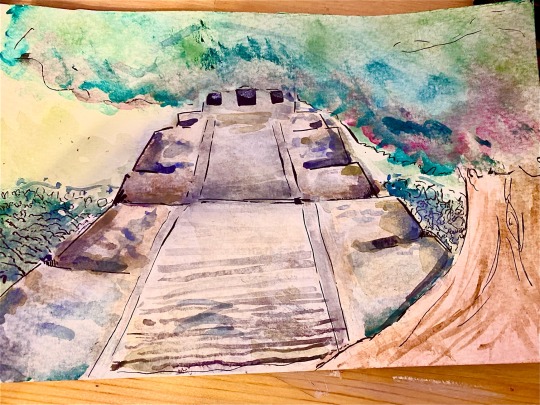
Tree and temple, ig
3 notes
·
View notes
Link

Archaeologist Eduardo Matos Moctezuma stands over a newly discovered platform at the archaeological site of Templo Mayor in Mexico City, Mexico, Oct. 6, 2011
Eduardo Matos Moctezuma, a celebrated Mexican archaeologist who led the excavation of the Great Aztec Temple in Mexico City, won this year’s Princess of Asturias award in the social sciences category, the Spanish foundation announced Wednesday.
The dig at the shrine, which was discovered in 1978 after being buried under the city’s main plaza since the 16th century, was a landmark event in the archaeological world and drew intense interest as it proceeded for more than 20 years.
That excavation, and others, represent “exemplary episodes of the scientific development of archaeology and a fruitful dialogue with the past, between separate cultures and between human and social sciences,” the Asturias Princess Foundation said in its citation.
It also cited the “extraordinary intellectual rigor” of the 81-year-old Moctezuma, who has written several books as well as more than 500 articles, catalogues and guides.
“Due to his scientific intelligence, his ability to communicate and his social commitment, Eduardo Matos Moctezuma and his body of work provide an inspiration for future generations of social scientists and citizens,” the citation said.
The 50,000-euro award ($52,600) is one of eight prizes, including in the arts, communication and sports, handed out annually by the foundation.
The awards are among the most prestigious in the Spanish-speaking world. An awards ceremony typically takes place in October in the Spanish city of Oviedo.
#🇲🇽#mexican archeologists#Eduardo Matos Moctezuma#spain#europe#Princess of Asturias award#Asturias Princess Foundation#Oviedo#aztec temple#mexico#mexico city#mexican#hispanic#latino
5 notes
·
View notes
Text
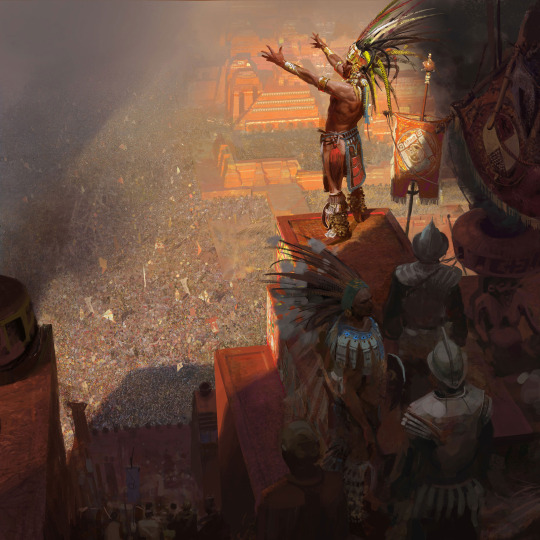

#conquistadors#craig mullins#aztec empire#spanish empire#conquistador#aztec#aztecs#moctezuma#hernán cortés#spain#spanish#mexico#templo mayor#temple#pyramid#mexica#huitzilopochtli#tenochtitlán#age of discovery#age of exploration#european#pedro de alvarado#mesoamerica#age of empires#cuitláhuac#bernal díaz del castillo#new world#americas#gonzalo de sandoval#cristóbal de olid
84 notes
·
View notes
Text


#columbo#season 5#a matter of honor#the smile. the tan. the little frizzy humidity curls#im gonna throw him down the stairs of an aztec temple
236 notes
·
View notes
Note
you are the queen of underboob
😮💨
Thank you as the title holder enjoy some Mexico photos where I thought my hair looked nice


#me#my face#selfie#ask#asked#answered#anon#I was excited my hair was glowing#they gave me free shots that matched my hair which was sooooo cute#a man also said sorry because he was in the woman’s restroom and the worker told me to just piss in the men’s#they were single stalls I didn’t care but it was so funny#I also asked if the Aztec gods would like my underboob#because I went to an old temple#they apparently did because I got so many drinks for free
22 notes
·
View notes
Text



The jungle realm has been one of my favorite ones to develop on this map. I wanted to do sort of fantasy-ancient-Central-American inspired builds, but not in ruins like they are today. I wanted these builds to be bright and colorful and vibrant like they would have been long ago.
#minecraft#mineblr#minecraft bedrock#minecraft bedrock edition#jungle#jungle temple#central america#Mayan#Aztec#Inca#Olmec#ancient Central America#mesoamerica#pyramids
43 notes
·
View notes
Text

Members of Devo, Joey Ramone & Lars Frederiksen, 1996.
When Devo joined the 1996 Lollapalooza as one of the „Mystery Acts“, they made sure to bring a fair amount of their legendary „Energy Dome“ hats - so their fellow tour pals could walk around with a flashy red helmet.
Here‘s Rancid singer/guitarist Lars Frederiksen receiving his, backstage at the George Amphitheatre, Washington, July 30, 1996.
When asked about the origin of the „Energy Dome“ hat, lead singer Mark Mothersbaugh stated:
„We designed them, Jerry and I. We were influenced both by German Bauhaus movement and geometric fashion, and Aztec temples. We just liked the look. It looked good, and it didn’t look like any other bands out there. We weren’t interested in wearing groovy hats or groovy clothing. We kind of looked like Lego toys or something by the time we got those on our heads, and that was a positive thing.“
📸Tim Mosenfelder
From RAMONES MUSEUM BERLIN on Facebook.
#devo#1996 lollapalooza#rancid#lars frederiksen#1996#90s#1990s#joey ramone#the ramones#energy domes#german bauhaus#aztec temples#iconic#tim mosenfelder#lollapalooza
10 notes
·
View notes
Text

Thrilled tourists - Teotihuacán, 2014
#picoftheday#travel#mexico#original photographers#photographers on tumblr#street photography#streetphoto color#tourists#ancient architecture#aztec culture#aztec art#ancient temple#architecture#art#photooftheday
12 notes
·
View notes
Text
white people shut the everloving fuck up about what appropriating peoples culture means challenge and just enjoy your goddamn sparkle dragons
#the road to hell is paved with good intentions#do not be offended for us#“this appears to be an Aztec Quetzalcoatl”#you idiot there were no people who even called themselves that if you want to get to the brass tracks of it#and its not a fucking lakota headress#have you ever seen a peacock or a turkey#yes this is about flight rising#shut uP shut UP and just LISTEN i promise it doesnt fucking hurt#you do not know enough about what you are “defending” to correct people!!#We do not actually want you correcting people for us#“eurocentric misconception”#the feathered serpent is OLDER than the temples its EVERYWHERE and its been depicted a thousand ways#shut up#fucking come back to sparkle dragon game and this immediately happens#its like that fucking white idiot who wanted to lecture about appropriate biracial representation#cloWN
9 notes
·
View notes
Text
How did the Aztec develop such advanced astronomical calendars? This Mexican mystery may now be solved thanks to discoveries at an Aztec observatory.
50 notes
·
View notes
Text

Ancient Aztec Stone Figurines Found in Mexico City
Archaeologists in Mexico City discovered a bevy of stone objects carved to look like humans at a former Aztec site.
Archaeologists in Mexico City have unearthed a collection of stone figurines depicting humans — carvings that the Aztecs likely used as offerings.
The 15 objects were discovered tucked inside a stone chest buried on the former site of the Templo Mayor, which once served as the temple complex of Tenochtitlán, the capital of the Aztec Empire. Spanish forces destroyed the temple in 1521, and the site is now home to the Mexico City Metropolitan Cathedral, according to a translated statement.

Fourteen of the artifacts portray men, while the smallest of the group features a woman.
All of the figurines are in the Mezcala style related to an early Mesoamerican culture that once existed in Guerrero, a state in southern Mexico, that was known for creating objects depicting humans, according to The Metropolitan Museum of Art.
Researchers think the Aztecs valued Mezcala objects and may have looted the sculptures in battle, according to the statement.
"This means that when the Mexicas (Aztecs) subdued those peoples, the figurines were already true relics, some of them more than 1,000 years old," archaeologist Leonardo López Luján, director of the Templo Mayor Project, which led the excavation, said in the statement. "Presumably they served as cult effigies, which they appropriated as booty of war."
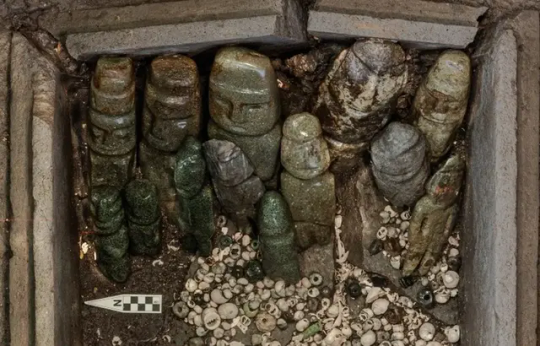
In addition to the figurines, the chest contained two rattlesnake-shaped earrings, 186 green metamorphic stone beads, snails, shells and marine corals.
"In their homes, the Mexicas used to keep their most precious belongings in palm-frond chests, such as fine feathers, jewelry or cotton garments," López Luján said in the statement. "And if we see it from the Templo Mayor … we can imagine the priests storing in these 'stone cases' the quintessential symbols of water and fertility: sculptures of the rain gods, green stone beads, shells and snails."
By Jennifer Nalewicki.
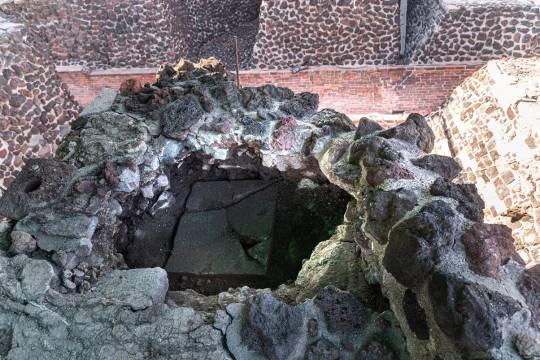


#Ancient Aztec Stone Figurines Found in Mexico City#Templo Mayo#temple complex of Tenochtitlán#Aztec Empire#ancient artifacts#archeology#archeolgst#history#history news#ancient history#ancient culture#ancient civilizations#aztec history#aztec mythology#aztec art
34 notes
·
View notes
Text

🌥⛰🌺🏛🪶📿💀🐶
#Louise Goalby#Day#Mountains#Field#Meadow#Flowers#Plants#Nature#Temple#Mayan#Aztec#Feather Headdress#Paint#Skull#Amulet#Dog#Spirit Animal#Totem Animal#Power Animal#Magical Creatures#Mystical Creatures#Supernatural Creatures#Magic#Magical#Mystical#Supernatural#Art#App#Adult Coloring Book#Paint By Number
19 notes
·
View notes